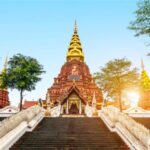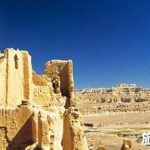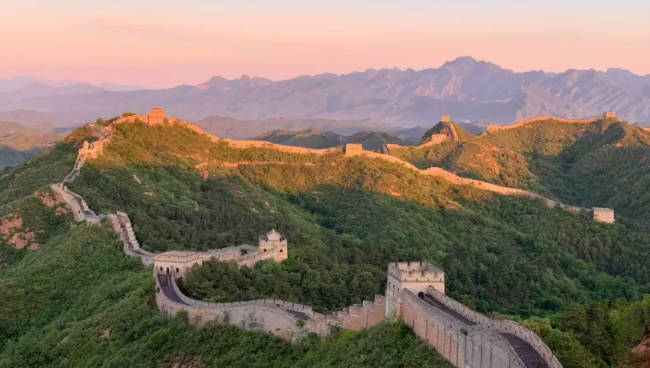I will always be captivated by the culture and beauty of ethnic minorities!
In just a week in Liangshan, I gained a slight understanding of the Yi people, but it’s merely scratching the surface of the thousand-year-old Yi culture. It would be wonderful to have the opportunity to live in a Yi village for a while.
The Yi people of Liangshan have thrived on this land for thousands of years, inheriting and preserving the simple, rich, and unique cultural traditions of the Chinese Yi, creating a unique and excellent national culture that includes social organization forms, astronomy, astrology, and calendar within the natural closed form of Liangshan. The Yi people’s blood flows with a brave, resolute, and simple national character.
Yi Traditional Festival: Torch Festival
In the traditional customs of the Yi people, there are grand ceremonies such as the Yi wedding ceremony, Torch Festival, and Yi New Year.
The Torch Festival is very important and has a long history. After a three-year hiatus, this year’s Torch Festival celebrations in Xichang city were restarted on the 24th day of the sixth lunar month, signifying that the lives of the Yi people have returned to normal. Everyone gathered at the Torch Square in Xichang, with everyone holding a torch, bonfires lit, singing and laughing, and the firelight reflecting on everyone’s faces.
The Torch Festival originated from the ancient people’s primitive worship of fire and is one of the most symbolic symbols in Yi traditional culture. It is also a carrier of cultural elements such as Yi traditional music, dance, poetry, diet, clothing, agriculture, astronomy, and admiration. Today’s Torch Festival usually lasts for three days and nights, divided into three stages: offering to the fire, playing with the fire, and sending off the fire (the traditional Torch Festival ceremony can be seen in various counties):
The first day is the offering to the fire. The village slaughters cattle and sheep, shares collectively, and prepares wine and meat for the ancestors. In the evening, people build an altar at a location chosen by the elders, strike stones to make fire to light the sacred flame, and the Bimo recites scriptures to offer to the fire.
The second day is playing with the fire. People gather under the sacred flame of the altar and hold a variety of traditional festival activities. Men race horses, wrestle, sing, and bullfight, while women hold butter umbrellas and dance ‘Duoluo He’ and Dali dance. On this day, the most important activity is the Yi beauty contest.
The third day is sending off the fire. People run with torches in hand and gather to form a giant central torch. People sing and dance around the huge bonfire. The Torch Festival is also a good time for young men and women to convey their feelings. They dress up to show themselves and win each other’s favor through competitions and performances. It is said that men and women who fall in love at first sight can scratch each other’s palm to express their feelings.
Yi Slave Society History
Regarding the social form of the Yi people, you can visit the Yi Slave Society Museum on Lu Mountain in Xichang to learn more. The museum is free, and it takes two to three hours to walk through it carefully.

The Yi slave society in Liangshan has a strict class division, especially between the ruling class and the ruled class, which is an insurmountable boundary. Even today, this class division still exists, and society is divided into five levels: Zimo (ruling class), Nuohe (Black Yi), Qunuo (White Yi), Anjiawazi, and Guobianwazi (slaves).
In the Yi slave society before liberation, everyone had their own level, and there were no free people without a level. Zimo and Nuohe (Black Yi) are the ruling class of the Yi people in Liangshan. Nuohe (Black Yi) consider themselves to have noble bloodlines and practice strict endogamy within their class, not marrying people of other levels. The status of Nuohe is hereditary, and they are born with noble privileges, enjoying the right to own slaves. They rely on exploiting the ruled class for their economic source. Qunuo, Anjiawazi, and Guobianwazi are the ruled class and the exploited class, with Anjiawazi and Guobianwazi being the lowest level.
It was not until 1950, when Liangshan was liberated, that the slave society of the Yi people collapsed. However, in remote villages, there is still no intermarriage between Black Yi and White Yi, and only a few Yi people who leave Liangshan will marry Han people.
Yi’s Beautiful and Diverse Clothing
In a period of ethnic costume change videos, we see that the Yi people’s clothing change is really the most advanced and atmospheric. Historically### Yi People’s Culture and Clothing
**Headwear and Honor**
Reflects the Yi people’s living habits and sense of honor of ‘looking after the head’, with complex and extraordinary headwear. Men’s clothing should reflect their brave and good-at-war spirit; clothing patterns reflect the Yi people’s understanding and worship of nature.
**Clothing in Liangshan**
Liangshan is located in a plateau area with lower temperatures, so the Yi clothing in Liangshan has no obvious seasonal division. Even in the hot summer, it is a combination of long robes and large coats plus Cha’erwa (cloak). Men mostly have hair on the top of their heads, and Yi girls with braids comb them vertically behind their heads. Women’s tops are made of wool, cotton, and silk, with patterns and patterns on the front and back collars and cuffs. The collar is decorated with gold, silver, jewelry, and jade. Both men and women of the Yi people wear a very textured ‘Cha’erwa’ cloak, which looks very solemn and dignified overall.
**Cultural Performance**
The photo is a large-scale live performance of ‘A Re Niu’ in Xichang.
### Must-try Liangshan Cuisine
**Liangshan’s Culinary Heritage**
Liangshan has two cuisines of Han and Yi, with Han cuisine mainly being Sichuan cuisine, which is saltier than Sichuan cuisine. Yi cuisine inherits the most primitive Yi culture, which is more simple in addition to the spicy and fragrant taste, and some people say it is ‘the gift of nature, the treasure of the world’. Liangshan has formed a geographical characteristic industry mainly based on ‘apples, pomegranates, green peppercorns, beef, navel oranges, bitter buckwheat, green tea, black sheep, and castrated chickens’.

**Tuotuo Meat**
Tuotuo meat is one of the most representative dishes in Yi cuisine and is an essential dish for the Yi people to entertain guests during festivals.
**Fried Potatoes**
Every meal, potatoes will not be absent, and the potatoes in Liangshan are very soft and glutinous. The most characteristic potato hamburgers can be seen on the snack stalls. You must try them, with a large potato cut in the middle and sprinkled with very spicy chili powder.
**Liangshan Bitter Buckwheat**
Liangshan Prefecture has a unique geographical advantage and climate conditions, making it an ideal pure land for planting green and organic bitter buckwheat. The tea water supply in hotels is bitter buckwheat tea, and the staple food on the dining table must have bitter buckwheat cakes.
**Xichang Fire Pit Barbecue**
Rough and bold, authentic, fresh, and simple ingredients grilled out of the aroma, almost becoming the base taste that floats in the air of Xichang’s nightlife at night. If you haven’t eaten it, remember to make up for it next time.
**Xichang Tofu Pudding**
Local drivers say that what they like to eat most is to go and eat tofu pudding. Many ordinary flies are very delicious. The tofu pudding in Liangshan is the Sichuan version, dipped in spicy sauce to eat.
**Wild Vegetables and Mushrooms**
A big difference from the northern diet is that it is very popular to eat wild vegetables and mushrooms here. The walls of the mushroom hot pot shops are posted to keep ventilated, and remember to cook the mushrooms before eating. The wild vegetable soup pot is very delicious, and the whole chicken is stewed in the pot. The soup is so delicious that it flies up. This freshness is only suitable for this land.
**Sweet Fruits**
Abundant sunshine has given birth to sweet and tempting fruits. Xichang is also a paradise for fruits, and even in winter, it is still fragrant with fruits and melons here. Abundant sunshine makes the fruits in Xichang in winter very delicious, and fresh fruits such as loquats, navel oranges, apples, pears, strawberries, grapes, cherries, tomatoes, kiwis, pomegranates, and persimmons are very popular.
**Liangshan Snow**
This is a yogurt drink that must be drunk locally, very hot, and a limited edition of the Torch Festival packaging was launched during the Torch Festival, which can only be bought in Liangshan.
**Love Drinking Wine**
The Yi people have a saying, ‘Han people are precious in tea, Yi people are precious in wine’, ‘there is wine is a feast, no wine is not a feast’. The main wine of the Yi people is the pot wine (also known as wine), which is the wine used by the Yi people during festivals and celebrations to entertain guests. I heard from friends in Chengdu that the Yi people don’t care about what kind of environment they are in, as long as there is wine, they can sit anywhere and drink.
**Fish and Water Yanghua in Lugu Lake**
Friends who go to Lugu Lake, remember to eat the big fish in the lake and water Yanghua ~ The way to do it here is spicy and salty, and if you can’t eat too salty, you must say less salt when ordering, and the less salt here may be saltier than what we usually eat.









